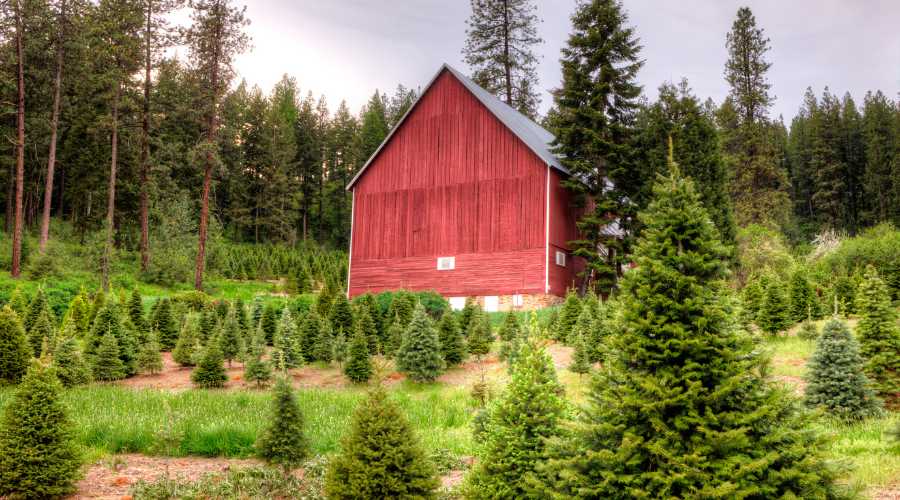Trees play an essential role in our lives by providing oxygen, absorbing carbon dioxide, and offering countless environmental and economic benefits.
With a growing demand for sustainably sourced wood, fruits, and nuts, starting a tree farm can be a profitable and ecologically responsible venture.
In this blog post, we’ll guide you through the process of establishing a successful tree farm, from setting your goals to managing your farm effectively.
Determining Your Tree Farming Goals
Before starting your tree farm, it’s crucial to identify your objectives. Tree farming can serve various purposes, including:
- Timber production: Growing trees for lumber, pulpwood, or veneer.
- Fruit/nut production: Producing fruit or nut trees for consumption or sale.
- Nursery stock: Raising trees to sell as seedlings or saplings for landscaping or reforestation projects.
- Carbon sequestration: Planting trees to absorb carbon dioxide and combat climate change.
Once you’ve determined your primary goal, assess your resources, such as land availability, financial considerations, and the time commitment required to manage your farm.
Selecting Tree Species and Varieties
When selecting tree species for your farm, consider factors such as climate, soil type, growth rate, and market demand. The following popular tree species cater to different goals:
- Timber trees: Pines (such as Loblolly, Slash, and Longleaf), Douglas Fir, Oak, and Black Walnut.
- Fruit/nut trees: Apple, Pear, Cherry, Pecan, and Walnut.
- Ornamental trees: Japanese Maple, Dogwood, and Magnolia.
Site Preparation and Planting
Proper site preparation is essential for the healthy growth of your trees. Begin by conducting a soil test to identify nutrient deficiencies or imbalances.
Amend the soil and fertilize as needed to create an optimal growing environment.
Next, decide whether to plant seeds directly or transplant saplings.
Direct seeding is more cost-effective but requires more time for the trees to mature. Transplanting saplings is faster but more labor-intensive and expensive.
Spacing is crucial for the growth and yield of your trees. Trees planted too closely together may compete for resources, while trees planted too far apart may not utilize the available land efficiently.
Consult with local forestry experts or extension services to determine the optimal planting density for your chosen species.
Tree Farm Management
Managing your tree farm involves several key components:
- Irrigation and water management: Ensure your trees receive adequate water, either through rainfall or supplemental irrigation. Monitor soil moisture and adjust your watering practices accordingly.
- Pest and disease control: Regularly inspect your trees for signs of pests or diseases, and implement integrated pest management strategies to protect your investment.
- Pruning and thinning: Prune your trees to encourage healthy growth and maximize yield. Thinning may also be necessary to reduce competition and improve light penetration.
- Fertilization and soil management: Monitor your soil’s nutrient levels and apply fertilizer as needed to maintain optimal growing conditions.
- Harvesting and marketing strategies: Develop a plan to harvest and sell your products, whether that involves selling timber to local mills, marketing fruit at farmers’ markets, or supplying saplings to nurseries.
Legal and Regulatory Considerations
Starting a tree farm may require navigating zoning and land use regulations, as well as adhering to environmental protection requirements.
Familiarize yourself with local, state, and federal regulations that pertain to your operation.
Additionally, consider pursuing certification programs or incentives, such as the American Tree Farm System, which can provide recognition, resources, and potential tax benefits.
Financial Aspects of Tree Farming
Estimate your start-up costs, including land acquisition, site preparation, planting materials, and equipment.
Project your income and expenses over the short and long term, taking into account the time it takes for your trees to mature and generate revenue.
Keep in mind that timber and fruit/nut production may take several years to become profitable, while nursery stock can provide a quicker return on investment.
Consider potential tax implications and benefits associated with tree farming. In the United States, tree farms may qualify for preferential tax treatment, such as reduced property taxes or deductions for expenses related to the operation.
Consult with a tax professional to ensure you’re taking advantage of all available tax benefits.
Conclusion
Starting a tree farm requires careful planning, dedication, and patience.








